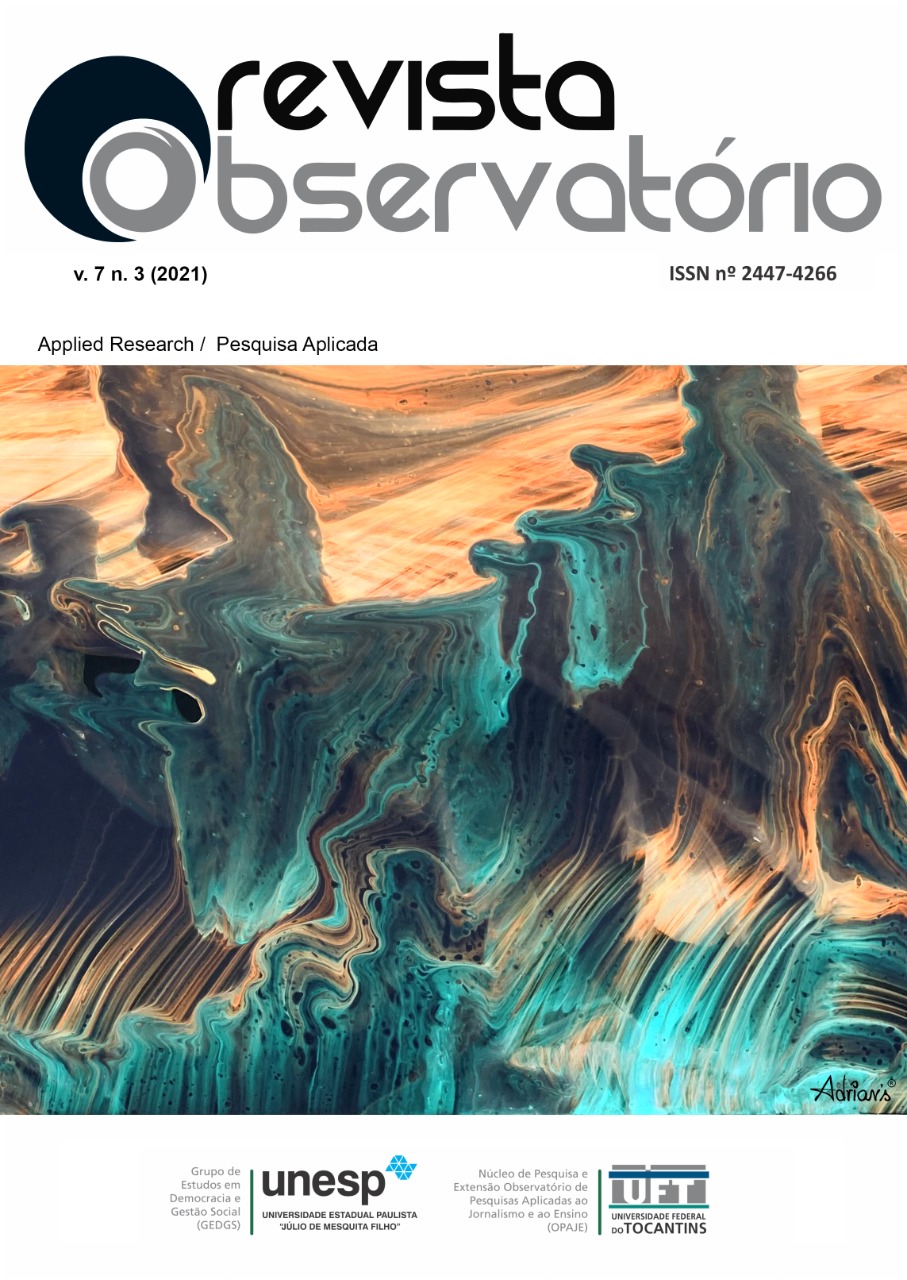COMPUTATIONAL ASSISTANCE: newsbot development for financial organizations
DOI:
https://doi.org/10.20873/uft.2447-4266.2021v7n3a9ptKeywords:
Strategic communication, Organizational strategy, Automated content, Newsbot, AlgorithmsAbstract
This research aims to develop the Minimum Viable Product (MVP) of a cloud platform that transforms structured data into automated text, to enhance the production of content in stockbrokers. It is Applied Research that combines different techniques for the development of MVP. As some of the results achieved, the work presents the logic of infrastructure of macro operation of the newsbot and the main elements for the many layers of development that an application of this nature needs.
Downloads
References
ADOBE; ECONSULTANCY. Índice de Experiência: tendências digitais para 2019: Sumário executivo. London: Adobe, 2019. Disponível em: https://www.adobe.com/content/dam/acom/en/modal-offers/econsultancy-digital-trends-2019/pdfs/econsultancy-2019-digital-trends_US.pdf. Acesso em: 3 ago. 2020.
BARICHELLO, Eugenia M. M. da Rocha. Apontamentos sobre as estratégias de comunicação mediadas por computador nas organizações contemporâneas. In: KUNSCH, Margarida Maria Krohling (org). Comunicação Organizacional: histórico, fundamentos e processos. Volume 1. São Paulo: Saraiva, 2009.
BEER, David. The Social Power of Algorithms. Information, Communication and Society, [s. l.], v. 20, n. 1, p. 1-13, 2017.
BIRD, Steven; KLEIN, Ewan; LOPER, Edward. Natural Language Processing with Python. Sebastopol, CA: O’Reilly Media, 2009.
CARNEIRO, Márcio dos Santos. Comunicação Digital e Jornalismo de Inserção: como o big data, inteligência artificial, realidade aumentada e internet das coisas estão mudando a produção de conteúdo informativo. São Luís: Labcom Digital, 2016.
CRUZ, Fábio. Scrum e Agile em Projetos: guia completo. 2. ed. Rio de Janeiro: Brasport Livros e Multimídia, 2018.DANS, Enrique. Meet Bertie, Heliograf and Cyborg, the New Journalists on the Block. Forbes, [s. l.], 6 Feb. 2019. Disponível em: https://www.forbes.com/sites/enriquedans/2019/02/06/meet-bertie-heliograf-and-cyborg-the-new-journalists-on-the-block/#2812bd50138d. Acesso em: 10 maio 2019.
DJANGO. The Web Framework for Perfectionists with Deadlines. Kansas, EUA: Django, 2005. Disponível em: https://www.djangoproject.com/. Acesso em: 8 set. 2020.
FERRARETTO, Elisa Kopplin. Assessoria de imprensa: teoria e prática. 5. ed. São Paulo: Summus, 2009.
GRAEFE, Andreas. Guide to Automated Journalism. Columbia Journalism School, 2016.HELBING, Dirk et al. Will Democracy Survive Big Data and Artificial Intelligence? Scientific American, [s. l.], 2017.
HULTEN, Geoff. Building Intelligent Systems: a guide to Machine Learning Engineeing. Apress. Washington, 2018.
ISO. IEC. ISO/IEC 25010: System and Software engineering - System and software Quality Requirements and Evaluation (SQuaRE) - System and software quality models. Switzerland: ISO 2011.
LAKATOS, Eva Maria. Fundamentos de Metodologia Científica. 7. ed. São Paulo: Atlas, 2010.
LOBO, Renato Nogueirol. Gestão da Qualidade. 1. ed. São Paulo: Érica, 2010.
MANOVICH, Lev. Trending: the promises and the challenges of big social data. [S. l.: s. n.], 2011. Disponível em: http://manovich.net/index.php/projects/trending-the-promises-and-the-challenges-of-big-social-data. Acesso em: 19 set. 2019
MAYER-SCHONBERGER, Viktor; CUKIER, Kenneth. Big Data: como extrair volume, variedade, velocidade e valor da avalanche cotidiana. Rio de Janeiro: Campus, 2013.
OSTERWALDER, Alexander; PIGNEUR, Yves. Business Model Generation Inovação em Modelos de Negócios: um manual para visionários, inovadores e revolucionários. Rio de Janeiro, RJ: Alta Books, 2011.
SOMMERVILLE, Ian. Engenharia de Software. Tradução Luiz Cláudio Queiroz. Revisão técnica Fábio Levy Siqueira. 10. ed. São Paulo: Person Education do Brasil, 2018.
SOMMERVILLE, Ian. Engenharia de Software. Tradução: Selma Shin Shimizu Melnikoff, Reginaldo Arakaki, Edílson de Andrade Barbosa. Revisão técnica: Kechi Kirama. 8. ed. São Paulo: Pearson Addison Wesley, 2007.
Published
How to Cite
Issue
Section
License
[PT] Autores que publicam nesta revista concordam com os seguintes termos:
1. Autores mantém os direitos autorais e concedem à revista, sem pagamento, o direito de primeira publicação, com o trabalho simultaneamente licenciado sob a Creative Commons Attribution License (CC BY-NC 4.0), permitindo o compartilhamento do trabalho com reconhecimento da autoria do trabalho e publicação inicial nesta revista.
Leia todos os termos dos direitos autorais aqui.

